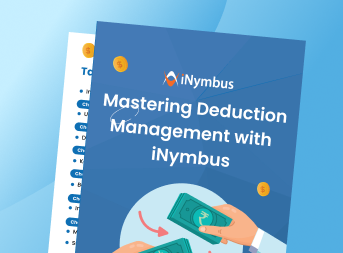 Invoices are the heartbeat of any business, especially in retail, where suppliers and major retailers depend on precise payment cycles. When payments are delayed or withheld, suppliers can face serious cash flow problems.
Invoices are the heartbeat of any business, especially in retail, where suppliers and major retailers depend on precise payment cycles. When payments are delayed or withheld, suppliers can face serious cash flow problems.
Two terms often used in this context are outstanding invoices and overdue invoices. While they might sound similar, they carry different meanings, and for retail suppliers, understanding the difference can help avoid lost revenue and unnecessary disputes.
Outstanding vs. Overdue Invoices
An outstanding invoice is any invoice that has been issued but not yet paid in full. This can happen for several reasons:
- The payment is still within the agreed terms.
- The retailer is processing the payment but hasn’t completed it.
- There are minor delays caused by internal approvals.
An overdue invoice, on the other hand, is one where the payment date has passed. These invoices are past due and require immediate follow-up. All overdue invoices are technically outstanding, but not all outstanding invoices are overdue.
For suppliers, this distinction matters because overdue invoices often require more urgent action and carry a higher risk of write-offs or retailer deductions.
Why It Matters for Retail Suppliers
In retail supply chains, the difference between getting paid on time and having money tied up for months often comes down to compliance. Retailers like Walmart, Target, and Amazon have strict EDI (Electronic Data Interchange), ASN (Advanced Shipping Notice), and invoicing rules. Even a small mismatch in data can delay payment.
When invoices remain outstanding, they can trigger:
- Shortage claims for items reported missing during delivery.
- Compliance deductions for labeling, packaging, or ASN errors.
- Pricing disputes when promotional or agreed prices are mismatched.
- Duplicate invoice issues that require investigation.
Each unresolved invoice not only delays payment but can also shrink your profit margins if deductions are applied.
The Financial Impact of Unresolved Invoices
Leaving invoices unresolved has a cascading effect on your business:
- Restricted cash flow: Tied-up capital can slow payroll, purchasing, and expansion plans.
- Higher borrowing needs: Companies may need short-term financing to cover gaps.
- Increased write-offs: The older an invoice gets, the harder it is to recover. Invoices over 90 days old may have only a 60–70% recovery rate.
- Rising administrative costs: Chasing payments consumes AR team resources.
For retail suppliers working with multiple large retailers, these issues multiply quickly and can impact operational stability.
Manual Management vs. Automation
Traditionally, accounts receivable teams handle outstanding invoices manually:
- Downloading remittance data from various retailer portals.
- Reconciling payments against purchase orders and shipments.
- Contacting retailer finance teams for clarification.
- Gathering proof of delivery or shipping documents.
- Filing disputes in complex retailer systems.
This can take 30–90 minutes per invoice. Multiply that by hundreds or thousands of invoices, and the workload becomes overwhelming.
Automation changes the game. Platforms like iNymbus replace slow, manual processes with:
- Automatic retrieval of remittance data from retailer portals.
- Instant matching of invoices with purchase orders, shipments, and payments.
- Automated dispute filing for shortages, pricing discrepancies, and deductions.
- Real-time AR dashboards showing outstanding balances.
- Complete audit trails for compliance.
With automation, dispute resolution time can drop from weeks to days, reducing write-offs and freeing up AR teams to focus on strategic work.
Real-World Example
Imagine a supplier ships goods to a major retailer on June 1. Upon delivery, the retailer reports a 2% shortage and pays only 98% of the invoice. The remaining amount is withheld until proof of delivery and shipment documentation are provided.
Without automation, gathering and submitting these documents could take weeks. With iNymbus, the process can be completed in hours, allowing the supplier to recover payment faster and protect their cash flow.
Key Takeaway
Outstanding and overdue invoices are part of doing business, but unmanaged delays can drain cash flow and reduce profitability. For retail suppliers, automation offers a faster, more accurate way to resolve disputes, recover deductions, and maintain strong financial health.
iNymbus integrates with over 40+ major retailers, including Amazon, Walmart, Target, and Costco, automating deduction management and outstanding invoice disputes from claim intake to resolution.
